Agrostemma: types and varieties, cultivation, application
Content:
Agrostemma is a flower known to the world for a very long time. It is a clove herb that grows mainly in the Mediterranean. The ancient Greeks gave their name to this mesmerizing flower. It itself comes from two words: "agros", which means harvesting, and "stemmantos", meaning a wreath. Simply put, the name of this plant can be translated as a wreath of the field. However, this is exactly how our ancestors used it: wreaths woven from Agrostemma were considered the most beautiful. Not surprising, given that its stems were supposedly created for this very purpose.
Agrostemma: characteristics of a herbaceous plant
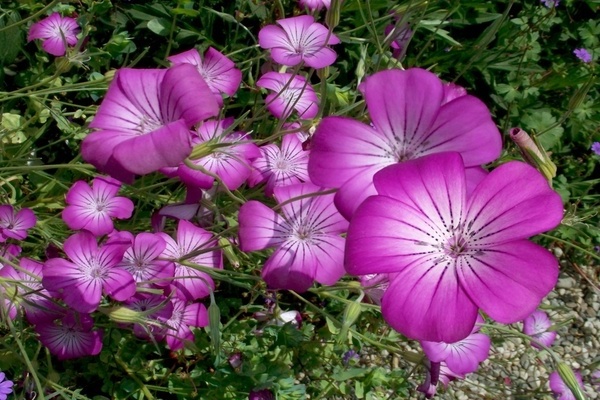
Photo of Agrostemma flower
Agrostemma is an annual flower. In addition, it is incredibly common in modern Asia and Europe. It has taken root very well here thanks to the local temperate climate.
As already mentioned, the stem of Agrostemma is ideal for weaving wreaths. It is almost completely straight and very thin, but extremely long: up to one meter in length. However, the stem doesn't take up much space and actually looks pretty dainty.
The leaves of Agrostemma are quite thin, and therefore they are almost invisible on the stem. Each shoot ends with an incredibly beautiful inflorescence. It is so beautiful because it has an incredibly regular geometric shape and a very bright and rich pink hue.
Each flower reaches about five centimeters in diameter and has strictly five petals. Moreover, they are also painted extremely "correctly", if so, of course, we can say about the color. Each petal has a very clear gradient from deep pink to white, as if it was done in some graphics program. Agrostemma blooms and pleases the eye with its beauty for a very long time: the first flowers appear at the beginning of summer, but the last ones fade only in September. And sometimes this stunning flower can last even until October.
How to grow Agrostemma flowers?
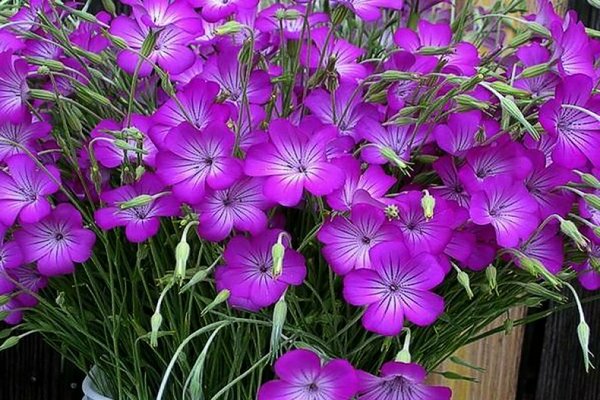
Photo of Agrostemma flower
Naturally, the fact that Agrostemma is a field plant does not mean that it is ready to grow under absolutely any conditions. Unfortunately, only weeds can boast of this.
The first thing to learn is that Agrostemma is very loves sunshine, and therefore the place for planting it is necessary to choose as illuminated as possible on your site. The longer the flower stays in direct light, the better.
However, this exactingness to sunlight fully and completely pays off by the fact that, due to its adaptability to field conditions, Agrostemma is not at all afraid of blowing drafts.
Also Agrostemma loves quite definite priming, and this must be taken into account if you want to plant this wildflower in your area. The soil in which Agrostemma will be grown should be especially light. Also, the characteristic that she must necessarily have is looseness and drainage.
These qualities are simply necessary for the soil for planting Agrostemma, since these plants are absolutely not adapted to an excess of moisture, and therefore the soil in which this very moisture stagnates for a long time is destructive for them.By the way, this fear of excessive moisture explains why Agrostemma will never be seen growing near a river or lake. Of course, drainage is necessary when planting not only in open ground, but also in a pot or container.
If only heavy soil is present on your site, it must be diluted with sand. Another factor that Agrostemma cannot stand is the increased acidity of the soil. Therefore, if your soil is very far from neutral, in the name of the preservation of the flower, it will have to be mixed with wood ash.
How to care for Agrostemma?

Photo of Agrostemma flower
However, no matter what requirements Agrostemma puts forward when planting, this plant is incredibly unpretentious and will not take you too much time and effort. Basically, if you are new to gardening, then Agrostemma is a flower invented especially for you.
In fact, all care comes down to the fact that you hope that the weather will be suitable for Agrostemma. If not (for example, if it does not rain for a very long time), of course, it is necessary to produce watering plants. The best time to shower is early in the morning. Although, in principle, Agrostemma can be watered shortly before sunset. This is not so important, but the morning time is still better.
If you ask if Agrostemma needs any feeding or fertilizers, the answer is no. Of course, if you want, you can always add a little humus or compost, but the lack of feeding will not affect this unpretentious flower in any way. On the other hand, on the contrary, too abundant fertilization can significantly harm the plant.
Due to the huge amount of nutrients it receives from humus or compost, Agrostemma will build up too much green mass, and most likely will not give flowers at all.
This way, by trying to do the best for the plant, you will have a whole patch of ordinary grass in your area. And the grass is a rather dull sight. Nevertheless, if the soils are very poor, it is quite possible and even useful to apply fertilizer once or twice during the summer.
Perhaps, there is only one thing from the point of view of care, without which Agrostemme in some situations simply cannot do. And this thing - support... Yes, as already mentioned, strong gusts of wind and drafts are not terrible for Agrostemme, however, they can tilt the stems very strongly and attach them to the ground. But the support allows you to completely get rid of this problem.
It is best to use thin, almost invisible twigs as it. However, in doing so, of course, it is very important that they are strong enough to do their job, and not fall with the flowers.
Also a rather important procedure - loosening soil, which will help get rid of weeds, which are perhaps the most sworn enemies of Agrostemma.
Since Agrostemma is an annual plant, the flowers begin to wither when the first significant frost occurs. Of course, even Agrostemma can be grown as a perennial. However, to be honest, it makes very little sense. The fact is that for this you will need to build a fairly large shelter from snowstorms and frosts, and, most likely, over time, the flowers will become much less beautiful and decorative.
And the long-term cultivation of Agrostemma makes even less sense, if you remember that planting it is very, very simple.
Agrostemma: growing from seeds

Agrostemma seeds
In fact, seed propagation is the only Agrostemm propagation method used in wide circles. And the reason for this is not that all other methods do not work or destroy the plant. The point is simply that Agrostemma does not need more complex methods, because the seeds provide a sufficiently high germination capacity and do not require further transplantation.Or, to put it simply, growing Agrostemma from seeds corny does not require any troubles. Note!
Agrostemma seeds can be stored for up to four years, and even after this period, flowers can be grown from them without any problems. Be careful though, these small black seeds are incredibly poisonous.
When to sow seeds?
There are only two seasons when it makes sense to plant Agrostemma, and these two seasons, as you probably already guessed, are autumn and spring. However, we recommend that you plant these annuals in the spring as the fall planting shows a lower survival rate and germination rate. All the details are below:
Spring planting... It is held most often in April, however, in principle, it can be held a little later. However, it is not time that is much more important, but the temperature of the soil, which by this very time must necessarily be stable and equal to sixteen to eighteen degrees.
Autumn planting... There are no specific and precise deadlines to adhere to. However, most often sowing occurs in October - late September. The main thing is for the soil to freeze a little (up to the same sixteen to eighteen degrees Celsius), but not completely stiffened.
Little things and nuances of planting Agrostemma:
- In the event that you are planting seeds in a small pot or container, then to protect from cold weather, you can use not only film or agrofibre, but also ordinary glass.
- If you want to rely on the seeds to really germinate, and we have no doubt that you want to, then you just need to make sure that the seeds are not too buried. The most optimal planting depth is no more than one centimeter.
- Seeds are most often planted in a nesting way: up to four seeds are placed in one hole. However, this is not necessary, and you can use a more familiar method.
- In the event that the planting of Agrostemma seeds was carried out in the spring, it is necessary to immediately start watering future flowers. Remember that watering is carried out when the soil dries out enough. Agrostemma should not be watered excessively.
- In two or three weeks, you will probably already see the first sprouts of future flowers. However, when this happens, they will definitely need to be thinned out in order to avoid Agrostemm's struggle with each other for nutrients and water in the future, as well as to prevent disturbances in the growth of their root systems. The optimal distance between two shoots is fifteen to twenty centimeters.
If you are going to plant seeds in the fall, then you need to act a little differently. For sowing seeds, furrows are prepared in which they are planted. After that, it is imperative to carry out mulching.
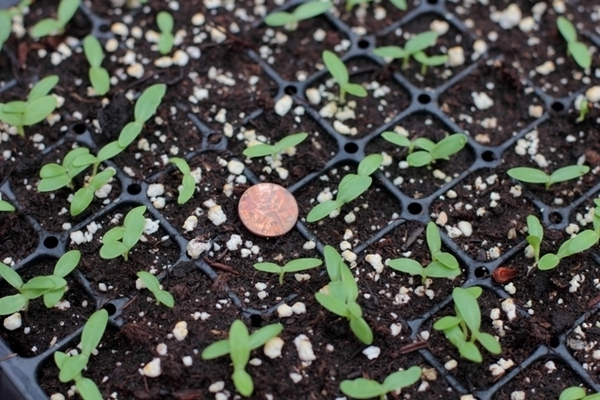
If all the instructions have been followed, and the seeds have successfully overwintered, then, well infused, they will show a much brighter and more lush flowering than seeds planted in summer. However, as you may have noticed, there are more troubles with autumn plantings. In any case, which method to choose is entirely up to you.
What is the danger of Agrostemma?
Yes, that's right, it is much less worth taking care of the danger and pests that await your Agrostemma in your own garden than about the danger emanating from it itself. After all, as a field plant, Agrostemma is quite well adapted to all kinds of diseases, fungi and viruses. But you are certainly not adapted to its poison, called agrostemic acid. So that the fact that Agrostemma is toxic should never be forgotten.
Of course, for the most part, Agrostemma is dangerous only when it enters the body directly, which, let's be honest, is unlikely. However, its juice is also toxic, and therefore, to prevent accidental ingestion of food, it is necessary to work with gloves.And if you find that the juice has got on your skin, you need to thoroughly rinse the place where it dropped to prevent possible future contact with the toxin.
The danger, however, is no longer for the gardener, but for your garden itself, Agrostemma also poses. The fact is that you do not have full power over it, and this naughty flower may well "engage" in self-sowing, occupying your entire site.
If young shoots are not weeded out in time, Agrostemma will very quickly spread everywhere, which, of course, is by no means desirable if you want to create any kind of floral arrangement in your garden. It is sometimes quite difficult to notice young sprouts, however, if they are not followed, it will be even more difficult to cope with the consequences.
Important! A factor that many overlook, however, which certainly should not be left unnoticed, is that Agrostemma attracts bees very much. Of course, beekeepers will consider this Agrostemme as a plus, but many gardeners may not be delighted with such an interest of striped workers in their flower. And this fact can be especially repulsive if you suddenly have an allergy to bee stings. Therefore, think twice if you are afraid of bees before planting this flower in your area.
Types and varieties of Agrostemma
Fortunately, we will not have to deal with the taxonomy of this plant for a long time, because Agrostemma exists in only two types: Agrostemma Graceful and Agrostemma Ordinary. Let's take a closer look at each of them.
Agrostemma graceful - an annual representative of Agrostemma, which, in comparison with its relatives, has a rather impressive height. Also, the stem of this species is very branched, but, nevertheless, strong. The color of flowers in this type of Agrostemma is quite unique: most often you can find pink, purple and purple graceful Agrostemma.
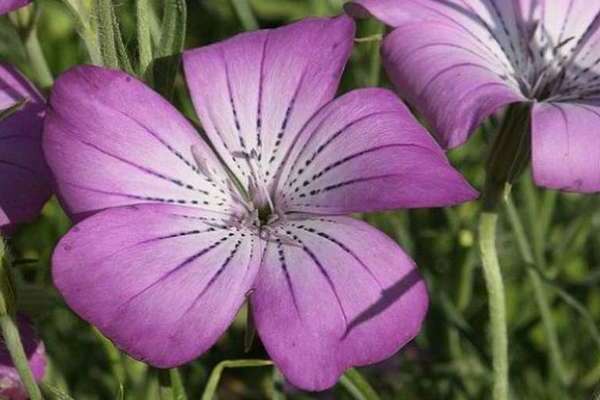
Photo of Agrostemma graceful flower
The peculiarities of the color of this species are given by three to four dark burgundy stripes running parallel to each other from the base and almost to the very tip of each petal. In addition, like most Agrostemma, the graceful Agrostemma is not characterized by a pure, unchanging color.
Instead, its petals are colored in a gradient that goes from pure white at the base of the petal to a rich color at its tip. Due to the fact that the stems of this type of Agrostemma branch very strongly, it may seem that they form a single bush, but this is not so, and each flower is still a single one.
Flowering, like all Agrostemm, is quite long and lasts from mid-July to the very end of September. The downside, however, is that the flowers will delight you with their unusual color only in the morning. They close after lunch.
Agrostemma ordinaryDespite its name, it does not differ too much from the graceful Agrostemma, which is described above. However, the difference, in fact, is quite striking, because Agrostemma vulgaris may well be grown both as an annual and as a biennial.

Photo of Agrostemma ordinary flower
A slightly more noticeable difference is that this type of Agrostemma is slightly lower than its graceful sister. Its height rarely exceeds half a meter. The flowers of Agrostemma are also distinguished by their inexpressive size, but their distinctive feature is that they can bloom not only at the tips of the shoots, but also in the leaf axils.
It would seem that the difference is small, but it significantly affects how lush a flowerbed with Agrostemma ordinary seems in comparison with the previous species. Otherwise, they are very similar to the flowers of Agrostemma graceful: they have the same color and in the same way close in the afternoon.
It is easy to guess that the most popular among gardeners and florists are those varieties that bloom most magnificently, and whose flowers are more expressive and large. Among these varieties, the following can be distinguished:
- Milas Rose Queen (color - purple);
- Milas Serise (color - dark lilac, but many describe it as purple);
- Ocean Pearl (color - snow-white, covered with specks, like Dalmatians);
- Milas Pinky (color corresponds to the name - pink).
What are the uses of Agrostemme in landscape design?
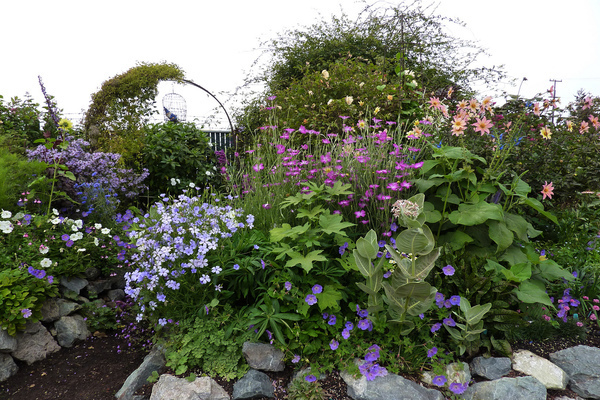
In fact, a very ambivalent attitude has developed towards Agrostemma in the agrarian environment. Gardeners and summer residents cannot stand it and regard it exclusively as a weed that only interferes and does not allow working normally. In addition, do not forget that this plant is toxic, which means it is fatal for, for example, cows or sheep, which, of course, is not a plus for her.
However, on the other hand, there are gardeners and flower growers who liked Agrostemma very much, and who found in their circles recognition not only as a very beautiful, but also, at the same time, extremely unpretentious, effective and easy-to-care plant. Plus, don't forget how long it blooms, which naturally hasn't gone unnoticed in the flower community.
If you, nevertheless, consider yourself to be in the second group, rather than in the first, you are probably interested in how you can use Agrostemma to decorate the garden. Well, for this they came up with several ways:
- Agrostemma can be planted as a single plant. In this case, the landing should be large enough to be able to compete for the viewer's attention along with roses or clematis.
- Agrostemma can also be planted in tandem with other plants. Most often, it is located in the middle or even in the background. However, some gardeners, completely not regretting it, plant it in the foreground.
- And, of course, Agrostemma can be planted in a pot or container, in which, by the way, it looks very organic. If everything is quite simple and clear with the first and third options, then the second still needs to be dealt with.
For example, what kind of plants will look harmonious with Agrostemma? Let's figure it out. Agrostemma feels best in tandem with snapdragons, marigolds or kaleria, which has been shown by many years of trial and error.
By the way, Agrostemma looks very good in well-ventilated places. Why there? But because the flowers of Agrostemma developing in the wind are very similar to real fluttering butterflies, which gives them special tenderness, grace and fragility (exclusively in a good way). In addition, do not forget that the wind of this decorative culture is not at all terrible. Well, and, of course, since Agrostemma comes from meadows and fields, it is meadow plants that will become the best pairs for her.
For example, you can plant ears or other grasses next to it. However, all these reflections about where Agrostemma looks, and where not, are inappropriate, because it has long been known that this flower looks good in almost any environment.
So, whatever garden you plan to create, believe me, Agrostemma will harmoniously fit into it, wherever you plant it. Perhaps the only place where she would look inappropriate is in the middle of the path.
Other uses of Agrostemma
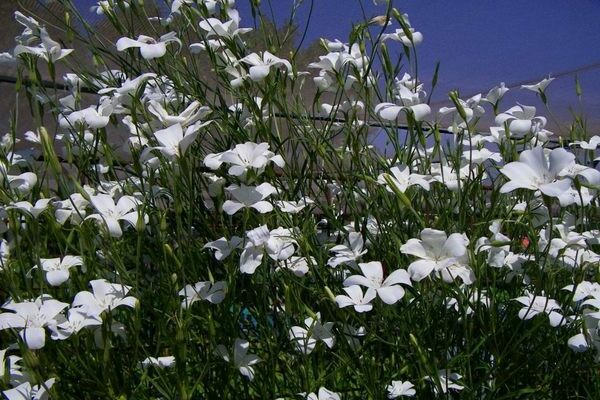
For a long time, flower growers have noticed that Agrostemma can easily complement a lush bouquet, which will not be ashamed to put in a vase in the most prominent place. It will hold out in such a bouquet for about a week, after which it will begin to fade and wither. However, Agrostemma can be used not only as a supplement, but also as an independent culture, from which you can make up a completely full-fledged bouquet.
In addition, Agrostemma has proven itself well as a medicine. This is, of course, strange to hear after all the stories about its toxicity, but it is true. Agrostemma leaves are mainly used as a medicine.Also, all kinds of tinctures and even ointments are made from it.
In addition, even the most toxic part of this plant - the seeds - is used as a medicine. However, the most important thing when using Agrostemma as a medicine in any of its manifestations is compliance with the recipe. A medicine is a medicine, and it is still a toxin.
Conclusion
Agrostemma is indeed deservedly a very popular decorative culture. It is precisely because of how easy it is to breed and care for it that many
gardeners and prefer it to many other colors. We hope that with this article we have answered all the questions that you might have regarding Agrostemma, and now you will not have any problems with its cultivation.

